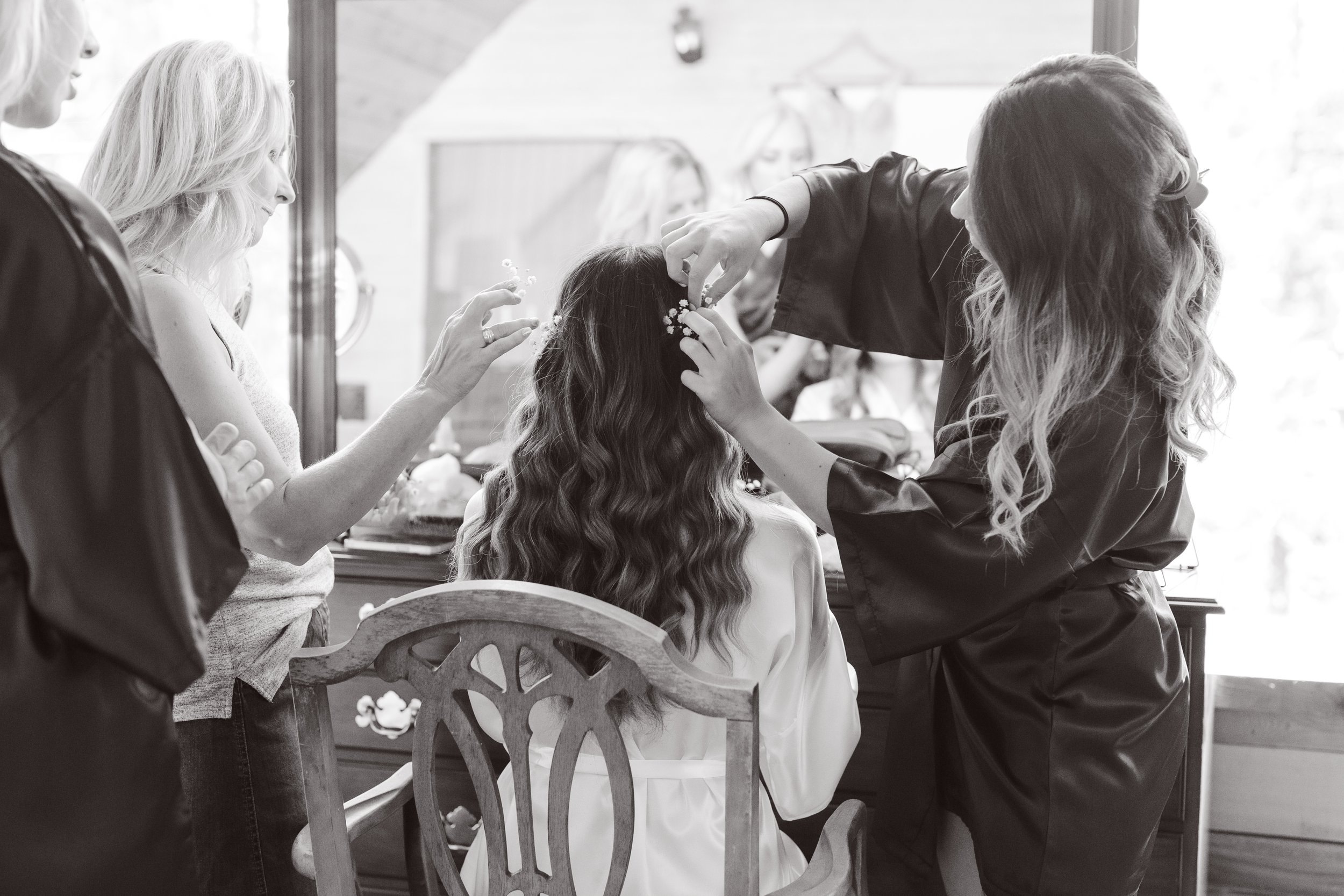Building Your Wedding Timeline (Photography POV)
How to Create a Wedding Timeline That Works for Photos
When it comes to planning your wedding day, your timeline is everything. It’s what keeps the day flowing smoothly, helps you stay relaxed, and makes sure there’s enough breathing room to actually enjoy the moments as they happen.
One of the biggest things I help my couples with is building a timeline that works not just for the logistics — but for the photos. Because the more intentional we are with the schedule, the more relaxed, beautiful, and meaningful your images will be.
Here’s how to create a timeline that supports amazing photos (and keeps the day stress-free).
1. Start with the Ceremony Time and Work Backwards
Everything in your timeline usually centers around your ceremony. Once we know what time you’ll say “I do,” we can work backwards to figure out when hair and makeup needs to start, when we’ll do your first look (if you're having one), and how long we need for portraits before guests arrive.
If your ceremony is at 3:00 PM and you're doing a first look, we’ll likely start photos around 1:00 PM. If you’re skipping the first look, we’ll shift more portraits after the ceremony — but we’ll plan for that too!
2. Build in More Time Than You Think You’ll Need
The day goes by fast. Things run late (they always do), and you don’t want to feel rushed between locations, outfit changes, or family portraits.
Give yourself some cushion time — 15 minutes here and there — so if something does run behind, you’re not cutting into the parts of the day you actually want to enjoy. Like golden hour portraits. Or a quiet minute to breathe.
3. Plan Enough Time for Each Photo Block
Here’s a rough guide to how long we typically need for each part:
Getting ready details: 30–45 minutes
Getting dressed + final touches: 30 minutes
First look (if you’re doing one): 15–20 minutes
Couple portraits: 30 minutes
Wedding party photos: 30 minutes
Family formals: 20–30 minutes
Golden hour portraits (evening light): 15–20 minutes
Of course, every wedding is different — but these are helpful ballpark numbers when we’re planning your day together.
4. Think About Light
Light changes everything in photography. That soft, golden light just before sunset? Pure magic. That’s why I always check the sunset time for your wedding date and build in golden hour portraits if we can. Even 15 minutes can make a huge difference.
If you’re having a winter wedding, keep in mind it gets dark early — we may want to plan for some of your photos to happen before the ceremony depending on the start time.
5. Talk Through Your Priorities
Want lots of candid guest shots during cocktail hour? Want to attend the full reception without missing a beat? Prefer more time for portraits or a quiet moment to yourselves?
Let’s talk through what matters most to you two, and we’ll build the timeline around that. There’s no one right way to do it — just the way that fits your vibe.
Final Thoughts
The best timelines don’t feel like a tight schedule — they feel like a smooth rhythm that keeps the day flowing, while giving space for the moments you’ll want to remember forever. And with a little planning (and the right photographer to guide you), it’s totally doable.
If you’re not sure where to start, or you’re feeling overwhelmed by all the moving pieces, I’ve got you. I help every couple build a custom photo-friendly timeline that actually works — and makes space for the good stuff.
Let’s make it feel easy.
